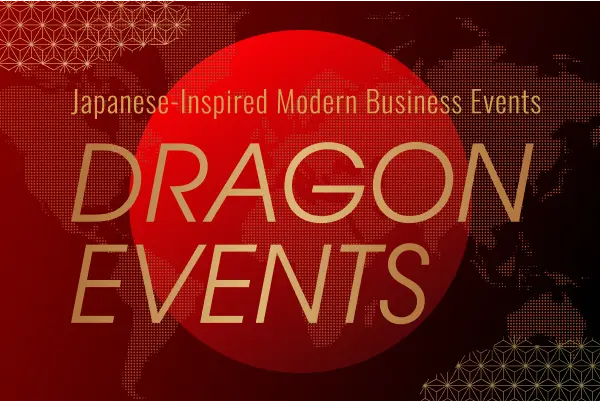From Omotesando to the World: How GP Builds Cross-Cultural Events
At Global Produce, we create events not only for Japanese guests but also for international audiences. Recently, we formed “TEAM DRAGON,” a group of bilingual event producers fluent in both Japanese and English. I’m Toshiki Kadono, a new member of GP and part of this team. As a freshman, I interviewed Mr. Natsuro Okutani, one of our lead producers, to learn what’s important before, during, and after an event—especially when working with overseas guests. I hope this article offers a behind-the-scenes look at our event-making process and showcases some of the events we’ve produced.

The Blueprint: Behind Every Great Event
I first asked Mr. Okutani about the differences between producing events for Japanese and overseas audiences. His answer surprised me: “There’s no major difference.”
Instead, he emphasized three key elements that form the foundation of any successful event: the timetable, the Statement of Work (SoW), and the deck (proposal slides, etc.). According to him, if these three are solid and consistent, the event becomes feasible.
He highlighted that feasibility is the most important factor—and that success comes from “facing the same direction” as the client, meaning they share the same vision from the beginning. Mr. Okutani ensures that the timetable, the SoW, and the deck are always clear and aligned to keep everyone on the same page.
In addition, his deep understanding of local regulations—like fire safety laws and labor rules—allows him to offer the best and safest solutions to clients. I could sense his confidence, built on a strong foundation of knowledge and pride in producing events in Japan.

Cultural Content Without Borders: How to Engage Global Guests
Next, I asked Mr. Okutani how he creates event contents that resonates with guests from overseas. His answer surprised me again: “There’s no big difference between Japanese and international audiences when it comes to being surprised, moved, or entertained.”
However, he emphasized the importance of sharing the same vision with the client. “It’s crucial that we’re imagining the same thing,” he said.
I was reminded of a moment when I saw Iaigiri(居合切)—a traditional Japanese art of drawing and cutting with a sword. I felt awe and even a bit of fear. That kind of emotion, I believe, is universal and can be shared with anyone, regardless of nationality. When we include traditional elements like this in our events, we always provide explanations or guides so that no one feels left out.
I asked how he comes up with content that overseas guests will truly enjoy. He answered, “The key is to step into the guests’ shoes—think about what they’d want to see or experience and then show it to them.”
At first, I worried that using traditional Japanese content might feel too cliché. But I realized it’s not about what we show—it’s about how we show Japan to the guests.
Fast, Flexible, and Rooted in Culture: GP’s Event Case Files
WPC Networking Event
We held this event at a stylish nightclub in Ginza, equipped with seven hexagonal screens, dynamic lighting, and an impressive stage setup. For the entertainment, we invited ARAIFUMI (新井風味), a dance group known for blending Jazz Hip-Hop with traditional Japanese dance art, Mai(舞).
Mr. Okutani’s strong mutual understanding with the performers allowed us to quickly shape content that was not only culturally rich but also highly engaging. This kind of trusted relationship is something many GP staff members cultivate—it’s one reason why our response time and content creation can often outpace other companies.
Lenovo Kickoff 2025
Another project was Lenovo’s 2025 kickoff event, held at Meguro Gajoen. We opened with a traditional Kyogen(狂言) performance, then transitioned the guests to a dining experience at Grand Hammer Shimbashi, where we chartered an entire floor for a private reception.
Mr. Okutani emphasized the importance of balancing tradition with a sense of freshness. As producers, it’s tempting to always chase the “new,” but he pointed out that what guests often truly seek—especially international ones—is authenticity and a connection to tradition.
When selecting the venue for the dinner party, he intentionally chose a space with a strong Izakaya (Japanese pub) theme. Even though the signage and atmosphere had a modern, “Neo Tokyo” vibe, the core experience remained deeply rooted in Japanese culture.
Watch Through Producers Eyes: what I learned
Finally, I asked Mr. Okutani about the future of events in Japan, especially those produced for overseas clients. He told me, “We’re living in uncertain times—natural disasters, pandemics, economic shifts—but that’s exactly why events matter. And it’s why GP must continue producing events.”
He advised me to always stay aware of what’s happening around us and to remain flexible in how we respond.
As a young event producer, I want to keep learning and create events that truly engage every guest—no matter where they’re from.
Assistant Producer




